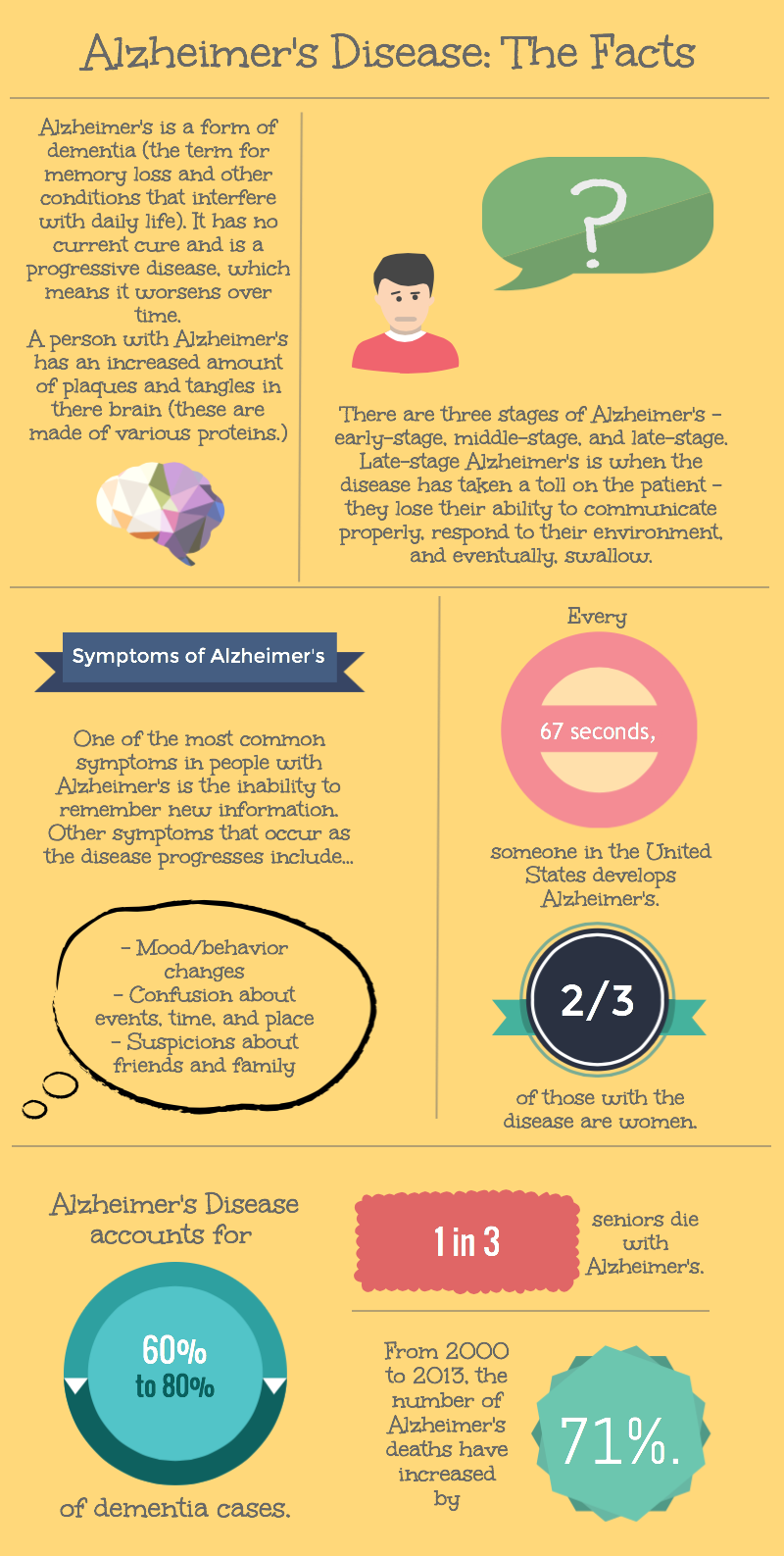Alzheimer’s Disease

Many people know about or have at least heard of the disease known as Alzheimer’s. Alzheimer’s is a disease that attacks the areas of the brain that deal with learning and memory. Out of the top ten causes of death, Alzheimer’s is the only disease that has no cure. In fact, one in three seniors die with Alzheimer’s, according to the Alzheimer’s Association.
Alzheimer’s disease is a common form of dementia, the term for basic memory loss that occurs when you age. It accounts for up to 60 to 80 percent of cases of dementia. People with Alzheimer’s have an increased amount of brain plaques and tangles (clumps of proteins) in their nerves which attack nerve cells and interfere with communication of messages through them. (Though plaques and tangles occur in people without Alzheimer’s as well, those with Alzheimer’s tend to have more of them). Build-up of these tangles and plaques leads to a decrease in brain size.
Alzheimer’s is also a progressive disease, which means that it worsens over time. As time passes, the number of plaques and tangles increase as the cortexes in the brain that deal with planning, learning, and memory become smaller. Alzheimer’s occurs in three stages — early-stage, middle-stage, and late-stage, which most seniors are afflicted with. When one has late-stage Alzheimer’s, it can be hard for them to carry on a conversation or respond to stimuli in their environment. However, Alzheimer’s is not a disease of old age, as you can show signs of the disease as early as 40 to 50 years old. This is also known as early-onset Alzheimer’s.
Symptoms of Alzheimer’s disease are rather easy to detect — people with Alzheimer’s tend to forget newly learned information, have trouble speaking, and suffer from frequent changes in behavior. However, it is hard to know for sure if someone actually has Alzheimer’s disease. There are some early signs that people should watch out for as well. For example, people with early-onset Alzheimer’s tend to forget things that they just did or miss appointments. They may also have trouble solving problems or communicating with friends and family. Noticing these signs and notifying a doctor are some of the things that people should do to treat Alzheimer’s disease early. Despite these signs, it can still be difficult to tell whether a patient truly has the disease. Because of this, doctors need an accurate medical history of the patient and brain imaging in order to fully diagnose the illness.
Of course, there are some factors that can’t be changed with Alzheimer’s, such as genetics. But there are some ways to prevent Alzheimer’s from taking over the brain. Eating a Mediterranean diet is suggested, which consists of little red meat and emphasizes vegetables and fish. Exercising and maintaining a healthy weight also help. If a person has Alzheimer’s already, the most that can be done are drug treatments.
If you have a relative or a friend that you think might have Alzheimer’s or some other form of dementia, it’s wise to consult a physician. Again, the person may not have Alzheimer’s and may just be extremely forgetful. However, if the person does have the disease, it is important to assist them with everyday life. Just be there for them, and make sure to support others affected by Alzheimer’s as well.



















